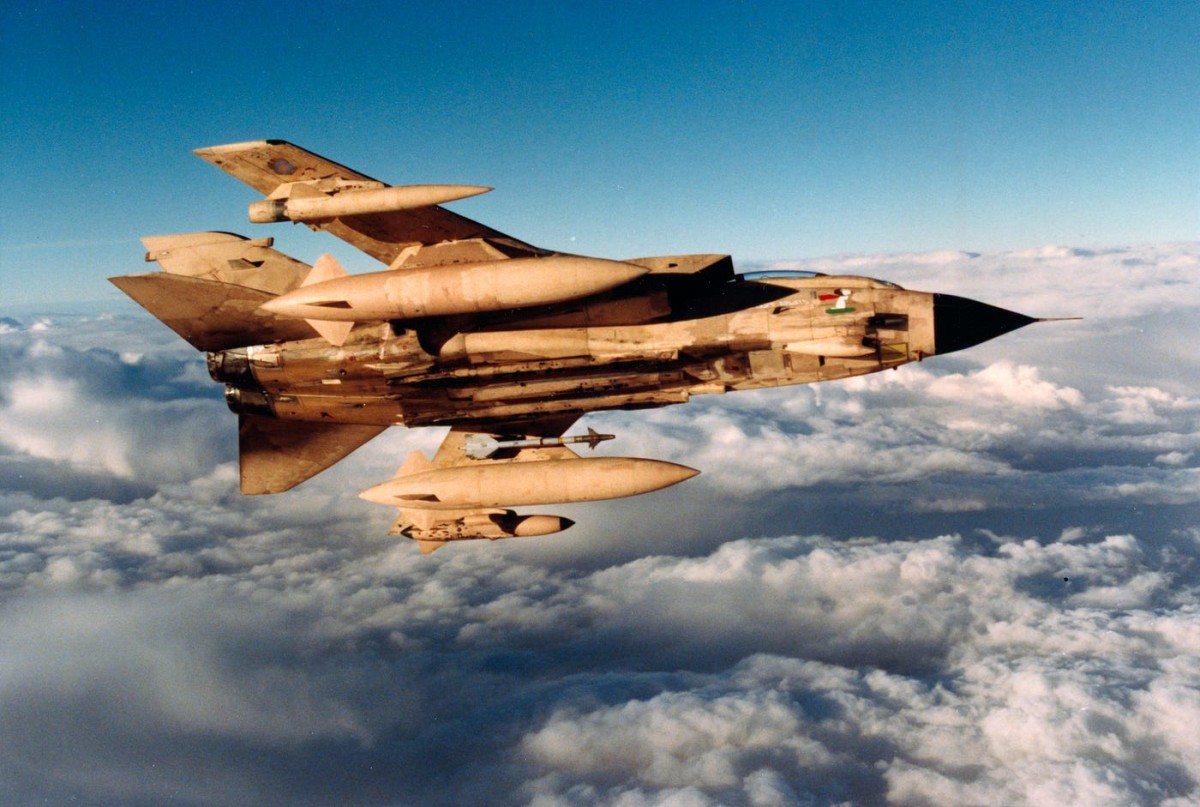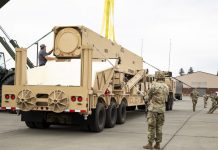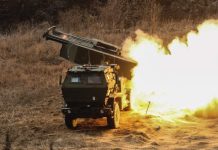On August 14, 2024, the aviation community marked the 50th anniversary of the Panavia Tornado’s inaugural flight amid serious tensions in the Middle East between Israel and Iran.
Over five decades, a large number of this legendary supersonic aircraft were manufactured, showcasing its versatile design through various iterations, including the IDS (Interdictor/Strike), ADS (Air Defense), and ECR (Electronic Combat/Reconnaissance).
Conceived amid the intensity of the Cold War, the Tornado emerged from a collaborative effort among the British, German, and Italian aerospace industries. Entering service in 1979, it swiftly became a cornerstone for the air forces of these three nations, embodying the technological and strategic advancements of its time.
As of August 2024, the Tornado remains a key asset for Germany’s Luftwaffe and Italy’s Aeronautica Militare.
However, both air forces are preparing for the aircraft’s retirement. Italy plans to decommission its Tornado fleet by 2025, while Germany will gradually retire its Tornados between 2026 and 2030.
The UK’s Royal Air Force has already retired its Tornado fighters, with the final aircraft being phased out in 2019. Saudi Arabia stands as the Tornado’s sole export customer, having acquired 120 jets. Approximately 80 of these remain operational today.
Despite ongoing modernization efforts and the potential acquisition of aircraft like the Dassault Rafale and the F-15EX Eagle II, the Tornado may continue to serve in Saudi Arabia for some time.
In March 2024, the German Air Force and Airbus unveiled a special livery on one of the remaining active Tornados in anticipation of the 50th anniversary.
50 years ago today, history was made: The first Tornado prototype took off on its first flight. 🛫 Happy birthday to this amazing aircraft! 🥳 We salute your legacy, which will live on in the #Eurofighter and #FCAS for decades to come. pic.twitter.com/FDefoesSEI
— Airbus Defence (@AirbusDefence) August 14, 2024
With over 950 built, the Tornado variable sweep-wing bomber became the largest European aeronautical cooperation program, a distinction now held by the Eurofighter Typhoon.
The collaborative success of the Tornado program saw its partner nations accrue over three million flight hours, including significant combat missions across various modern conflicts.
The Tornado was initially designed to counter the Soviet threat in Europe, but its role evolved, and it made substantial contributions to numerous post-Cold War conflicts.
Notable among these was the First Gulf War, where Tornados played a pivotal role in the early air campaign and subsequent engagements in the Balkans, the Middle East, and Afghanistan.
How Tornados Stormed The Middle East
The Tornado GR1, a British multirole combat aircraft, was developed in the 1970s with the primary role of deep strike and reconnaissance missions during the Cold War. Its design featured variable-sweep wings, allowing it to adapt to various speeds and altitudes, making it a versatile and powerful asset.
The aircraft was equipped with advanced avionics and a sophisticated terrain-following radar, crucial for low-level, high-speed missions. The Tornado GR1’s one of the major combat deployments came during Operation Desert Storm, the coalition effort to liberate Kuwait from Iraqi occupation in 1991.
This conflict showcased the Tornado GR1’s capabilities in a challenging environment, solidifying its reputation as a formidable strike aircraft.
The British contribution to the coalition air armada began with the deployment of Tornado GR1s to the Gulf on August 27, 1990.
Based at Muharraq, Bahrain, and later at Dhahran and Tabuk in Saudi Arabia, these aircraft were repainted in a distinctive “desert pink” to blend with the new operational environment. The initial contingent, mainly sourced from RAF Germany, required rapid adaptation, including mastering air-to-air refueling.
Originally designed for Cold War combat in Europe, the Tornado GR1s had to adapt quickly to the starkly different environment of the Middle East. The desert terrain posed unique challenges, and the pilots had to hone their skills for low-level flying over a vastly different landscape than the forests and plains of Europe.
The Tornado crews practiced extensively with the JP233 Anti-Runway weapon. However, live training was limited due to the weapon’s explosive nature, so pilots had to rely heavily on simulations and practice runs without actually deploying the munitions.
This rigorous preparation was crucial as the pilots needed to execute their missions with pinpoint accuracy under extreme conditions.
In the early hours of January 17, 1991, the skies over Iraq lit up with the fury of Operation Desert Storm. The British Tornado GR1s, equipped with the JP233 Anti-Runway weapon, aircraft were specifically tasked to cripple Saddam Hussein’s air force by demolishing his airfields with a special weapon.
The JP233 was intended to destroy runways and taxiways, rendering them unusable for aircraft operations.

Its two massive pods, each brimming with a mix of concrete-busting munitions and area-denial mines, were a critical component in the plan to neutralize Iraq’s aerial capabilities.
Flying at low altitudes under the cover of darkness, the Tornado crews faced immense dangers. The aircraft had to navigate a deadly maze of anti-aircraft fire and surface-to-air missiles while maintaining precise speed and altitude to effectively deliver the JP233’s destructive payload.
The risk was evident in the harrowing account of Nige Ingle, a Tornado pilot who described the terrifying experience of being hit by enemy fire but pressing on to complete the mission.
One notable mission involved the attack on Shaibah Air Base and Ubaydah bin al-Jarrah Air Base. Despite the challenges, including a direct hit that nearly compromised one of the aircraft, the Tornado crews successfully delivered their payloads.
The JP233’s sub-munitions scattered across the runways, creating craters and debris that effectively rendered the airfields unusable.
The Tornado GR1s’ night raids were a decisive element of the coalition’s air campaign. By destroying key runways and airfields, they significantly hampered Iraq’s ability to launch and coordinate air operations.
The first days of Operation Desert Storm were marked by unparalleled intensity as RAF Tornado crews braved the harsh realities of combat.
On January 19, 1991, Tornado crews were again thrust into the heat of battle, part of a critical mission that would define the early phase of the conflict. This mission involved a formidable package of eight Tornados from No 27 Squadron, tasked with attacking the Iraqi airfield at Tallil.
The operation was divided into two main phases. The lead four-ship formation was equipped with 1,000-pound dumb bombs designed to airburst over surface-to-air missile (SAM) emplacements.
This was followed by the second four-ship formation, armed with JP233 munitions, which were intended to target and neutralize the airfield itself. The second formation, positioned 40 seconds behind the lead group, took strategic precautions to avoid the frag from the bombs dropped by their predecessors.
The mission, however, was not without its casualties. The number two jet in the lead formation was hit by a Roland SAM. The aircrew was captured and endured six weeks of captivity and interrogation before their release at the war’s end.
Their loss underscored the high-stakes nature of these early raids and the dangers faced by the Tornado crews.
In the first four nights of Desert Storm, Tornado crews conducted an intense series of raids. They executed 53 JP233 missions, expending 106 of the munitions designed for airfield denial.
Change In Strategy
The relentless pace and high casualty rate took a significant toll. By the end of this period, four Tornados had been lost, and four aircrew members had been killed. The losses prompted a tactical shift. By January 22, the Tornado crews transitioned to medium-level operations at around 20,000 feet.
This altitude reduced their vulnerability to smaller SAMs, though larger, more formidable missiles still posed a threat. The coalition’s SEAD (Suppression of Enemy Air Defenses) operations had diminished much of the SAM threat, allowing for this crucial tactical adjustment.
The transition to medium-level operations marked a significant evolution in Tornado tactics. With the introduction of laser-guided munitions, precision bombing became a game-changer. The RAF Tornados, now equipped with TIALD (Thermal Imaging and Laser Designator) pods, began arriving at Tabuk on February 10.
This technology, combined with Pave Spike laser designator pod-equipped Buccaneers, allowed for precise targeting of bridges and hardened aircraft shelters using Paveway II laser-guided bombs.
This technological advancement highlighted the shift from the early, crude airfield denial tactics to more sophisticated precision strikes.

Though instrumental in the early phases, the JP233 had limitations that the advent of laser-guided bombs began to overcome. Its reliance on low-level delivery made it particularly hazardous and vulnerable to enemy defenses.
Despite its initial importance, the JP233’s days were numbered. Designed during the Cold War, it required the aircraft to fly directly over the target at very low levels, making it an easy target for enemy defenses.
The British Landmines Bill of July 1998, which was influenced by the Ottawa Convention, mandated the destruction of all JP233 bomblets.
JP233’s removal from the inventory was a direct consequence of these regulations, though the introduction of precision-guided weapons like the Storm Shadow cruise missile mitigated its loss.
That being said, during Operation Desert Storm, RAF Tornado crews executed a total of 2,535 sorties, utilizing a variety of munitions. Their arsenal included 106 JP233s, 3,631 unguided 1,000-pound bombs, and 1,079 laser-guided bombs.
They also carried out 140 reconnaissance sorties and launched 113 Air-Launched Anti-Radiation Missiles (ALARMs) for SEAD missions.
Despite the significant losses—six Tornados during combat operations—their efforts were instrumental in neutralizing Iraqi airfields and achieving coalition air superiority.
The transition from low-level operations to medium altitude and the incorporation of precision-guided munitions represented a profound shift in RAF tactics. The Tornado crews’ ability to adapt and innovate under fire was a testament to their skill and resilience.
- Contact the author at ashishmichel(at)gmail.com
- Follow EurAsian Times on Google News




